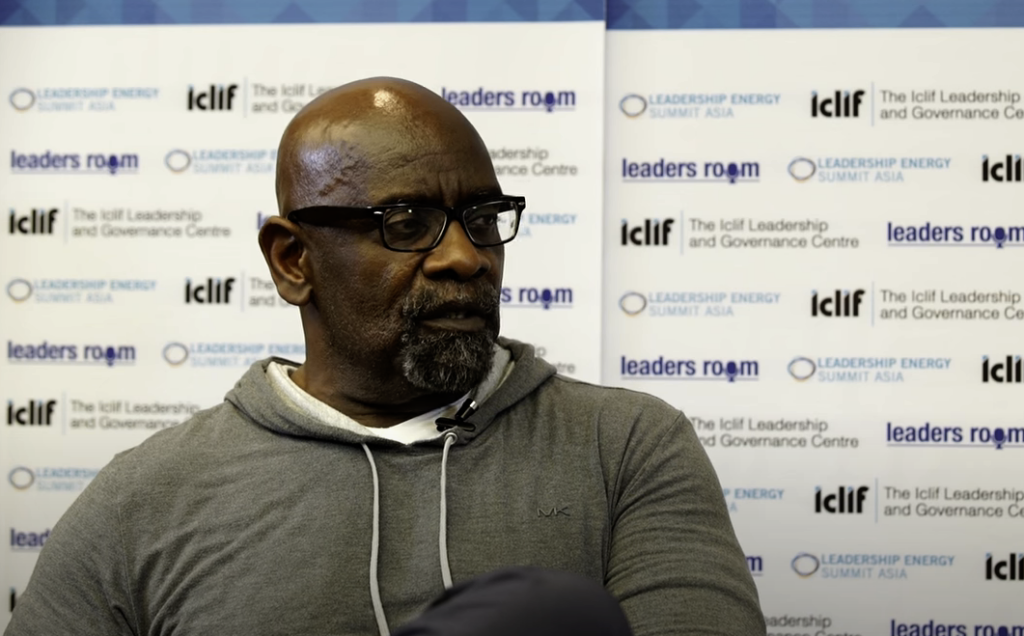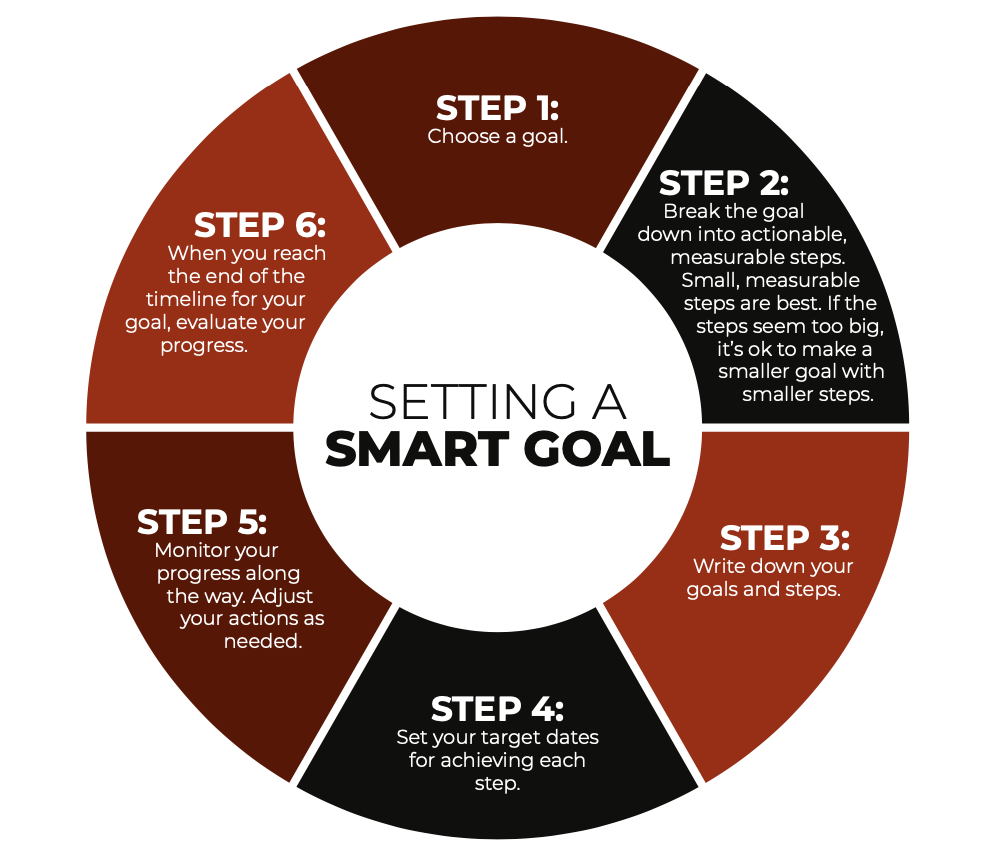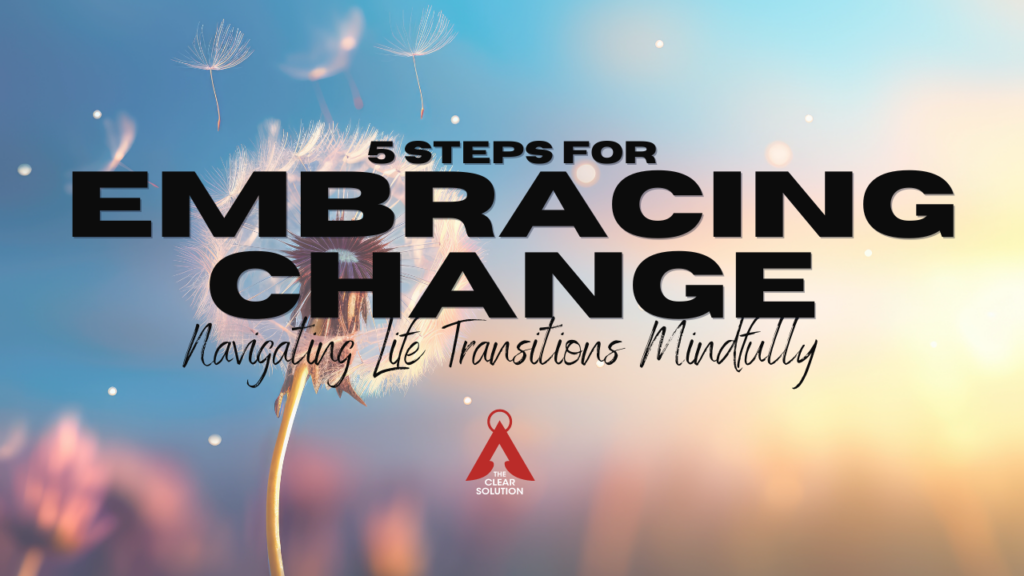Hello and welcome to The Clear Solution, your source for navigating life’s ups and downs with a mindful approach. Today, we’re diving into a very crucial topic – ‘5 Steps for Embracing Change: Navigating Life Transitions Mindfully.’ Whether it’s a new job, moving to a different city, or any significant life shift, change can be challenging. So, let’s explore how to handle these transitions with grace and mindfulness. Ready? Let’s begin.
Step 1: Acknowledge and Accept the Change
The first step in embracing change is to acknowledge it. Recognizing that change is happening is crucial. It’s normal to feel a mix of emotions – excitement, fear, sadness, or even relief. Take a moment to sit with these feelings. Acknowledge them without judgment. Remember, acceptance doesn’t mean you have to be happy about the change, it simply means you’re recognizing it as a part of your reality now.
A popular and inspiring story about facing significant change is that of Malala Yousafzai, the Pakistani activist for female education and the youngest Nobel Prize laureate. Malala’s life underwent a drastic and dramatic change following an attack that nearly took her life but ultimately spurred her into becoming a global advocate for education and women’s rights.

Malala grew up in the Swat Valley in Pakistan, where the local Taliban had often banned girls from attending school. Despite the danger, Malala became an outspoken advocate for girls’ education, inspired by her father’s progressive views and advocacy. In 2009, she started writing a blog for the BBC under a pseudonym, sharing her experiences of living under the Taliban regime and their attempts to take control of the valley, as well as her views on the importance of education for girls.
However, her advocacy and growing prominence came with risks. In October 2012, when Malala was just 15 years old, a Taliban gunman shot her while she was on a bus returning home from school. The attack left her critically injured, but she survived and was eventually transported to the United Kingdom for intensive rehabilitation.
The attempt on her life brought international attention to her cause and the plight of girls’ education in many parts of the world. Instead of silencing her, the attack only strengthened Malala’s resolve. After her recovery, she continued her activism with even greater fervor. In 2014, she became the youngest-ever recipient of the Nobel Peace Prize in recognition of her efforts against the suppression of children and young people and for the right of all children to education.
Malala’s story is a powerful example of how a life-altering event can be a catalyst for profound change and global impact. Her courage in the face of adversity, her dedication to her cause, and her ability to inspire and mobilize for a greater good make her story truly remarkable.
Step 2: Stay Present and Grounded
Change can make us worry about the future or regret the past. This is where mindfulness comes in. Practice staying present. Mindfulness techniques, like deep breathing or meditation, help ground you in the now. Focus on what you can control at the moment. When your mind wanders to ‘what ifs,’ gently bring it back to the present.
A simple and effective mindfulness exercise is the “Five Senses Exercise.”

This practice can be done anywhere and anytime and is particularly useful for grounding yourself in the present moment, especially when you feel overwhelmed or disconnected. Here’s how you can do it:
1. Notice Five Things You Can See:
– Look around you and bring your attention to five things that you can see.
– Pick something that you don’t usually notice, like a shadow or a small crack in the concrete.
2. Notice Four Things You Can Feel:
– Pay attention to the sensations of touch around you.
– Feel the texture of your clothing, the air on your skin, the surface you’re sitting or standing on, or the feeling of any objects you can reach.
3. Notice Three Things You Can Hear:
– Close your eyes and tune into the sounds of your surroundings.
– Listen to the distant noises that you can hear outside your immediate environment, like the sound of traffic, birds, or people talking.
4. Notice Two Things You Can Smell:
– Bring your awareness to scents that you usually filter out, whether they’re pleasant or unpleasant.
– Perhaps the smell of food, flowers, a book, or even the air itself.
5. Notice One Thing You Can Taste:
– Focus on your sense of taste for a moment.
– It might be the aftertaste of a meal or drink, a mint, or the general taste in your mouth.
This exercise is designed to center your mind by bringing your focus to your senses, anchoring you in the present. It’s a practical way to calm your mind, reduce stress, and increase your awareness and appreciation of your immediate environment.
Step 3: Seek Support and Share Your Experience
Going through change can feel isolating, but remember, you’re not alone. Seek support from friends, family, or even support groups. Sharing your experiences can be incredibly therapeutic. It also opens the door to receiving advice and encouragement from others who might have gone through similar transitions.
One well-known story about the impact of receiving support from others is the story of Chris Gardner, whose life inspired the movie “The Pursuit of Happyness.”
Chris Gardner’s journey from homelessness to becoming a successful stockbroker is a testament to the power of perseverance, resilience, and the crucial role of support from others. In the early 1980s, Gardner, while raising his toddler son, found himself homeless in San Francisco. He had invested his life savings in portable bone-density scanners, which he sold to physicians, but the business was not as profitable as he had hoped, leading to financial instability.

Gardner’s situation worsened when he was incarcerated for unpaid parking tickets, leading to the loss of his apartment and subsequently, homelessness. He and his son faced numerous hardships, including spending nights in a subway bathroom, shelters, or wherever they could find refuge.
Despite these overwhelming challenges, Gardner never gave up on his ambition to become a stockbroker. He participated in a competitive training program at a brokerage firm, balancing long, unpaid work hours with caring for his son. What made a significant difference during these trying times was the support he received from those around him. His determination caught the attention of a stockbroker who offered him a chance at an internship, and the daycare workers who looked after his son while he worked. Their belief in him and their assistance, both professional and personal, were vital in helping him stay afloat and focused on his goals.
Chris Gardner’s hard work eventually paid off when he passed his licensing exam and became a full-time employee at the brokerage firm, leading to a successful career. His story, captured in his memoir and the film adaptation, highlights the incredible impact of receiving support and kindness during times of hardship, and how it can be a pivotal factor in overcoming life’s most difficult challenges.
Step 4: Set Realistic Goals and Take Small Steps
In the face of change, setting small, achievable goals can be empowering. It’s about taking control where you can. Break down the change into smaller steps and tackle them one at a time. Celebrate the small victories – they add up to big achievements.
Goal-setting is a crucial skill, especially when dealing with overwhelming changes. It helps you to manage your expectations, creates a roadmap for success, and provides a sense of accomplishment as you progress. Here are some effective goal-setting strategies and tips on how to break down overwhelming changes:
1. Set SMART Goals:
– Specific: Be clear about what you want to achieve. Instead of saying, “I want to be healthier,” specify what that means for you, like “I want to lose 10 pounds” or “I want to run a 5k.”
– Measurable: Determine how you will measure your progress. This could be through milestones or specific metrics.
– Achievable: Your goals should be realistic and attainable. While they should be challenging, they shouldn’t be so daunting as to feel impossible.
– Relevant: Ensure your goals align with your values and long-term objectives.
– Time-bound: Set a deadline. This helps create a sense of urgency and can motivate you to take action.

2. Break Goals into Smaller Tasks:
– Large goals can feel overwhelming. Break them down into smaller, more manageable tasks. For example, if your goal is to write a book, start by setting a daily word count goal or allocating time each day to write.
3. Prioritize Tasks:
– Not all tasks are created equal. Identify which tasks are the most important and start with those. This helps in managing your time and energy more effectively.
4. Create a Timeline:
– Map out a timeline for your goals. This helps in visualizing the journey and can aid in keeping you on track.
5. Use the ‘One Thing’ Approach:
– Ask yourself, “What is the one thing I can do such that by doing it everything else will be easier or unnecessary?” This question can help you identify the most impactful action to take at any given moment.
6. Monitor Progress:
– Regularly review and assess your progress. This helps in maintaining motivation and allows you to adjust your strategies as needed.
7. Adapt to Changes:
– Be flexible. If you encounter obstacles or your circumstances change, be prepared to modify your goals accordingly.
8. Celebrate Small Wins:
– Acknowledge and celebrate your achievements, no matter how small. This can boost your morale and keep you motivated.
9. Seek Support:
– Don’t hesitate to ask for help or guidance. Support from friends, mentors, or professionals can provide valuable insights and encouragement.

10. Maintain Balance:
– While pursuing your goals, remember to maintain a balance. Avoid burning out by taking care of your physical and mental health.
When facing overwhelming changes, applying these goal-setting strategies can provide clarity and direction. By breaking down large changes into smaller, actionable steps, you make the process more manageable and less daunting, allowing you to navigate transitions with greater confidence and effectiveness.
Step 5: Reflect and Learn from the Experience
Every change brings a learning opportunity. Reflect on what this transition is teaching you. What are you learning about yourself? How is this change helping you grow? Reflection can turn a challenging experience into a valuable lesson for future transitions.
Journaling and reflective practices are powerful tools for processing changes, providing an outlet for thoughts and emotions, and offering clarity and insight into one’s experiences. Here’s how to effectively use these methods:
1. Choose a Comfortable Format:
– Select a journaling format that feels comfortable for you. It could be a traditional notebook, a digital journal, or even audio recordings. The key is to choose a medium that makes the process of expressing your thoughts as easy and natural as possible.
2. Create a Consistent Routine:
– Set aside a regular time for journaling or reflection. Consistency helps in developing a habit. Whether it’s first thing in the morning, during a lunch break, or before bed, find a time that works for you and stick to it.
3. Reflect on the Change:
– Start by writing about the change itself. Describe what has happened and how your life is different now. This could include changes in your daily routine, relationships, work, or even your internal emotional landscape.

4. Acknowledge Your Feelings:
– Be honest about how you feel regarding the change. It’s important to acknowledge all your emotions, whether they are positive, negative, or mixed. Writing down your feelings helps in validating them and understanding their impact on you.
5. Identify Challenges and Coping Strategies:
– Reflect on the challenges that the change has brought. What aspects of this change are most difficult for you? Alongside, note down any coping strategies that you’ve found helpful or plan to try.
6. Look for Learning and Growth Opportunities:
– Consider what you can learn from this change. How has it contributed to your growth? What new skills or insights have you gained? This perspective can transform a challenging experience into a valuable life lesson.
7. Set Goals and Plan Forward:
– Use your journal to set goals related to the change. These could be ways to adapt more effectively, personal growth goals, or strategies to overcome specific challenges. Planning helps in regaining a sense of control and direction.
8. Practice Gratitude:
– Amidst change, it’s beneficial to recognize and write about the things you’re grateful for. This practice can shift your focus from what you’ve lost or are struggling with, to what is still positive in your life.

9. Re-read and Reflect:
– Periodically, go back and read your previous entries. This can provide insight into how you’ve progressed, how your feelings and perspectives have evolved, and what strategies have been most effective.
10. Be Kind to Yourself:
– Use your journaling as a space for self-compassion. Write supportive and encouraging messages to yourself. Remember that it’s okay to feel overwhelmed and that change often brings growth.
Using journaling and reflective practices in this way can greatly assist in processing changes. It provides a private space to confront and understand your emotions, to make sense of your experiences, and to plan for the future with a clearer, more grounded mindset.
Remember… embracing change is a process.
It’s okay to have moments of doubt or uncertainty. What’s important is how you navigate these transitions – with mindfulness, patience, and self-compassion. You’re capable of handling more than you think, and each change is a stepping stone to new experiences and growth.



